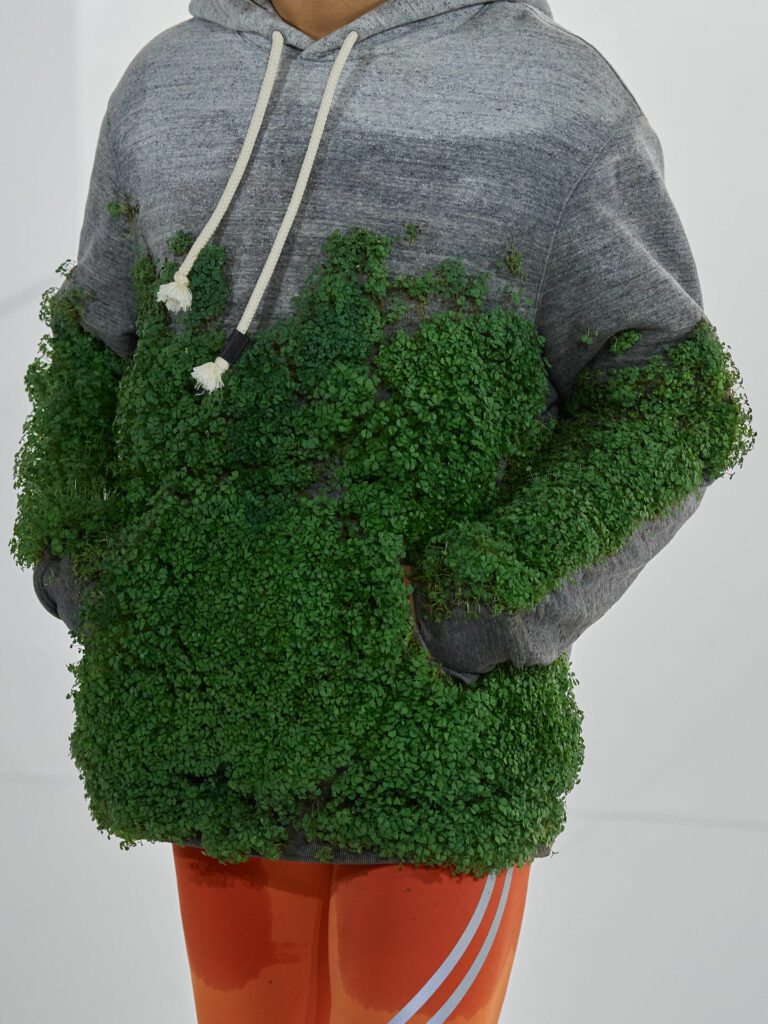NASA isn’t the first name you think of when it comes to high street fashion, but that might change in the next decade. While we explore alternative ways to adapt to climate change-induced rising tides, temperatures and extreme weather events, what we wear could change to protect us.
As the director of fashion intelligence for WGSN, the global leader in forecasting trends, Lorna Hall told The New York Times: ‘Clothing designed for heat is moving from a niche product into the mainstream.’ Instead of dressing to look hot, we could soon be choosing climate-change-resilient-clothes to keep us cool.
Climate Change Risks
While logic would dictate that wearing less makes you cooler, the glare of the sun and higher exposure to UV light are already contributing to rising skin cancer rates. If you get sunburnt even once in a two year period, it trebles your risk of getting skin cancer, according to Cancer Research UK.
For those working outdoors, being subjected to direct sunlight and heat can be very dangerous – and it is only going to get worse as temperatures rise. Heat exhaustion and heat stroke are obvious risks, and anyone with a chronic condition is at an increased risk for heart attacks and related issues.
Scientists found that increased temperatures led to higher mortality rates from cardiovascular incidents – when the thermometer goes up, your heart is under more pressure
Dr. Aaron Bernstein, the interim director at The Center for Climate, Health, and the Global Environment at the Harvard T.H. Chan School of Public Health, says that climate change is to blame for ‘unprecedented heat’ and that these rising temperatures can be ‘deadly’ for people with heart disease.
When studying the links between cardiovascular deaths and higher temperatures in Kuwait over a seven-year period, scientists found that increased temperatures led to higher mortality rates from cardiovascular incidents. Simply put, when the thermometer goes up, your heart is under more pressure. Climate change-resilient clothes can keep people cooler and alleviate some of that heat-related stress on the heart.
Wear More Not Less

Natives of the Gulf region have long known their traditional clothing helps keep them cool. In fact, the thawb/kandura/dishdasha was designed purposely for the hot, dry weather that is common all year round in the Middle East. Men’s garments are typically white, reflecting the sun’s rays, and loose, allowing cool air to circulate between the skin and clothing. This gentle breeze also cools sweat, preventing it from evaporating straight away and helping to lower body temperature.
Both Arab women’s and men’s clothes provide a barrier against dust and hot winds. They also shield against harsh UV rays. Though it goes against our instincts, it may be wise to wear more rather than less to protect ourselves when outdoors in the sun.
For some people, it may not be practical or appropriate to begin wearing national dress. There’s also a trade-off with sustainability as these garments are usually made with Egyptian cotton, the most breathable natural fibre. To produce one kilo of cotton takes between 10,000 – 20,000 litres of water. Organic cotton requires much less water, though it is still a thirsty crop.
But clothing companies have been developing other solutions, including climate change-resilient clothes to keep us cool as the Earth gets hotter.
Cool Cultural Change
In 2011, the Japanese government recognized the potential for fashion choices in reducing health risks to workers, and moderating the reliance on the power-hungry AC units found in every office.
Their Super Cool Biz campaign encouraged citizens to take a more practical approach to office wear during warm periods and swap suits and shoes for pedal pushers and sandals wherever appropriate.
‘The Japanese government is asking for a 15 per cent reduction in electricity consumption,’ Environment Minister Ryu Matsumoto told the country, referencing the power shortages some regions were facing at the time. This was more than a short-term measure designed to help ease the energy burden through the summer, but was an attempt to drive real cultural change. As Matsumoto confirmed: ‘This is a big turning point for changing the way Japanese live and our lifestyle.’
While initially met with scepticism, the initiative has now become ingrained in Japanese habits and is an important part of the nation’s drive toward sustainability.
Climate Change-Resilient Clothes
Fitness fans may already be familiar with evaporative cooling clothing, wearing it for their work outs at the gym.
When a liquid turns into vapour, it uses heat energy to change state, which causes a cooling sensation. Clothing manufacturers have begun making use of this ‘phase change’ scientific property to make towels and vests.
Before donning the item, you wet it, then wring it out before putting it on over another piece of clothing. This damp item allows water particles to evaporate slowly as the air passes over it, and you experience a cooling effect when heat is leaving your body. Moisture is released through the item on top, while your skin stays dry.
At the University of California, they are experimenting with adding palm-sized air conditioning units to T-shirts, powered by rechargeable batteries to reduce the wearer’s body temperature by up to 10°C
This simple scientific process has been adapted by the British cutting-edge fashion and tech start-up, Techniche International, to provide cooling clothes for construction workers in Qatar, and the technology could be used to create climate change-resilient clothes. The start-up’s StayQool suits use a layer of specially designed mesh outside a waterproof inner layer which, when soaked in water before wearing, provides cooling throughout the day.
In addition to an extended range of garments such as vests, hats, and neck bands from Techniche, an increasing number of companies and researchers around the world are producing and developing wearable cooling tech of this kind.
At the University of California, in San Diego, Professor Renkun Chen is experimenting with adding palm-sized air conditioning units to T-shirts, powered by rechargeable lithium-ion batteries, which have a lower environmental impact, to reduce the wearer’s body temperature by up to 10°C.
Similarly, several universities in China have teams manipulating polyester with nanomaterials and new weaving techniques to create a reflective fabric that can lower heat absorption by between 5°C and 10°C, depending on the time of day.
Carbon Neutral Clothing

Brands such as Sheep Inc. are going the extra mile, as not only have they crafted the Ultra-Light T-Shirt, which is temperature regulating, but the item is naturally carbon negative. It is sourced from regenerative sheep farms in New Zealand and then the fine Merino wood is knitted using solar-powered, zero-waste machines.

Edzard and Michael, the founders of Sheep Inc, introduced the product in the brand’s Lakeside Luminescence campaign in which they declared an ‘aspiration to elevate sustainability without compromising on quality or style… reflecting our commitment to a fashion future where elegance and environmental consciousness coexist seamlessly.’
As early as the 1980s, athletes were wearing gel packs initially designed for astronauts by the world’s most famous space agency, NASA
As global temperatures and climate awareness continue to rise, it’s easy to see how apparel makers around the world could begin to embrace this sort of philosophy as part of their core values and design processes.
Far Out Fashion

What about NASA? They have been involved in cooling fashion for much longer than many realise. As early as the 1980s, athletes were wearing gel packs initially designed for astronauts by the world’s most famous space agency, though some historians will point out the British RAF pioneered the idea with more rudimentary wearable tech as far back as the 1960s. The space race may not be considered a priority for everyone, and the environmental impact of achieving orbit is certainly something to be considered, but the terrestrial gains of the technology it drives cannot be denied.
In the mid-20th century, any environmental cost of these apparel advancements may have been an afterthought compared to the immediate benefits. As we approach the quarter mark of the 21st century, sustainability must be a core consideration for everyone involved.
If this can be achieved, the impact of fashion on how we handle year after year of record-breaking temperatures could prove to be much greater than we could have ever previously imagined.













